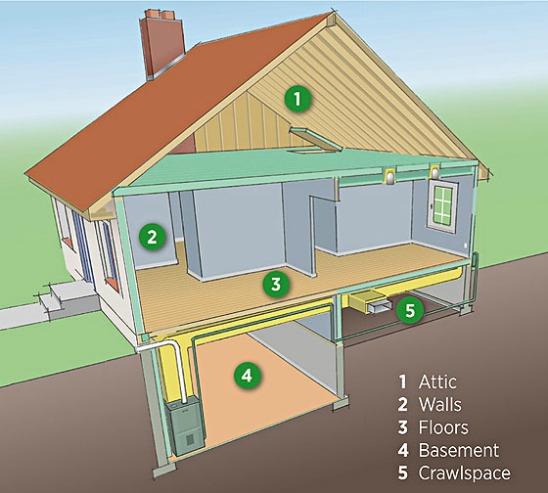A well-insulated home is one of the most effective ways to cut down on your heating and air usage and the first step in creating an energy efficient home. Insulating your home is also one of the most cost-effective ways to make your home more comfortable. Adding insulation to your attic, including the attic trap or access door, is relatively easy and cost efficient. To find out if you have enough attic insulation, measure the thickness of the insulation. If it is less than R-30 (11 inches of fiberglass or rock wool or 8 inches of cellulose), you could probably benefit by adding more.
If your attic has enough insulation and proper air sealing and your home still feels drafty and cold in the winter or too warm in the summer, chances are you need to add insulation to the exterior walls. This is more expensive and usually requires a contractor, but it may be worth the cost—especially if you live in a very cold or very hot climate. If you replace the exterior siding on your home for other reasons, consider adding insulation at the same time.
Insulation Tips
- Consider factors such as your climate, home design, and budget when selecting insulation for your home.
- Use higher R-value insulation, such as spray foam, on exterior walls and in cathedral ceilings to get more insulation with less thickness.
- Install attic air barriers such as wind baffles along the entire attic eave to help ensure proper airflow from the soffit to the attic. Ventilation helps with moisture control and reducing summer cooling bills, but don’t ventilate your attic if you have insulation on the underside of the roof. Ask a qualified contractor for recommendations.
- Be careful how close you place insulation next to a recessed light fixture—unless it is insulation contact (IC) rated—to avoid a fire hazard. See the Lighting section for more information about recessed lights.
- Follow the manufacturer’s installation instructions, and wear the proper protective gear when installing insulation.
For more information on energy savings visit http://energy.gov/
For insulation recommendations tailored to your home, visit the DOE Zip Code Insulation Calculator.



